Auto Show season 2017 stirs up new Buzz
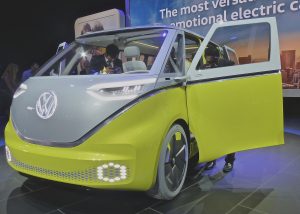
Nobody says it’s a new Microbus, but VW’s concept I.D. Buzz has the shape, with electric power and autonomous drive.
By John Gilbert
DETROIT, MI. — Self-driving vehicles, continued electrification of our global driving future, and an endless stream of sport-utility vehicles of all shapes and sizes are the indelible story of the 2017 North American International Auto Show, which consumed early January, 2017.
High-performcance and luxury vehicles were present also, of course, but nearly all manufacturers were either proclaiming or hinting about electric or autonomous (self-driving) cars.
Those of us who love to drive, to push a car to its limits with skill and dexterity — both yours and your car’s — may recoil at the thought of computer gremlins taking over the operation of our future cars, but that’s where we’re headed and everybody wants to be leading the pack.
For that reason, a highlight of the Detroit show for me was the showing of the I.D. Buzz. Strange name indeed, but it’s just the nickname of a Volkswagen concept vehicle that could well be the long-awaited emergence of the modernized Microbus, that hippie-happy minivan of the 1960s.
The Buzz is an eye-catcher, to be sure, and it’s obviously a concept vehicle because it’s hard to imagine it coming to life in production. But it ties together all of the ingredients for success on the auto show circuit of 2017 — an inventive and retro-flair people-hauler with an interior that could pass as a high-tech den, plus all-electric power with a range of 270 miles on a charge, and autonomous operation.
A surprise highlight is the new Rogue Sport from Nissan. I’ve always been a big fan of the Rogue compact crossover SUV, which now is an extremely popular star between the compact Juke and the larger Murano. After looking over the stylish new Rogue Sport at length, I was surprised to learn that it is a foot shorter than the Rogue, because it still seems roomy. Power is from a 2.0-liter 4-cylinder with 141 horsepower.
The same engine will power the concept V-Motion, a stylish new concept from Nissan with rear-hinged “suicide” rear doors and flashy lines that insiders suggest could indicate the direction Nissan will take with its next round of sedans.
Chevrolet Bolt, not to be confused with the Volt, also stands out, and Chevy’s home-town clout with the media judges for North American Car of the Year adds to its impact. The Bolt is in its introductory year, much like the Volt was when it was named Car of the Year, and the Bolt also won the media jury award, as though jurors are unaware or have forgotten that before the Volt won, a car had to be in production, in showrooms, and available to the public to be eligible.
The Volt wasn’t, but won; the Bolt isn’t yet, and also won. Rumors are you can buy one, or put money down, but introduction might be a few months off. Very neat design, and the Bolt differentiates from the Volt, which has a separate gas engine that kicks in to transform it to a normal car when the battery runs out. The Bolt has no gas engine, just pure electric, but with an impressive range claimed at 238 miles before needing to be recharged.
Voting points gave the honor to Bolt with 364 to runner-up Hyundai Genesis G90 105 and Volvo S90 at 101. Truck of the Year was Honda Ridgeline’s redesigned pickup with 305 vote points, to 193 for the runner-up Ford Super Duty, and 72 for the redone Nissan Titan pickup. The new category of Utility of the Year went to the Chrysler Pacifica minivan renovation at 300 points, to 135 for Mazda’s CX-9 and 125 for the Jaguar SK.
The most mainstream of cars, the Toyota Camry, came out in eighth-generation form, but Toyota guarded the unveiling behind curtains and prevented most media from getting close enough to even see it in the flesh, reduced to watching on video cameras from outside guarded curtain openings. I didn’t realize it, and just blundered through and got some photos on stage before stern-looking security types ordered us all out of there. New look, sportier, and with new 3.5 and 2.5 liter engines, plus a “next-generaton” hybrid. We are left to wonder what the next-generation hybrid will be like if we’re already at the next-generation.
Ford countered its primary rival with a lengthy presentation and a very brief drive through of the new 2018 Ford F-150 pickup, and the announcement with no static display or prototype that it will bring back old names in new form with the compact Ranger pickup and the Bronco, Ford’s first SUV.
KIA dazzled the media with introduction of the new Stinger, a very aerodynamic and sophisticated midsize sedan with a sporty flair. Made of 55 percent high-grade steel, Stinger has electronic adjustable suspension and power from a couple of 3.3-liter V6 engines ranging from 255 to 365 horsepower. An 8-speed transmission and available all-wheel drive and torque-vectoring steering control lift the Stinger above the norm.
Honda came out with a new-generation Odyssey minivan, with very angular, contoured-line styling, and it was pointed out that it is the largest-selling minivan on the same day Chrysler’s Pacifica claimed Utility of the Year.
GM redid its mid-range SUVs, with new models of the Chevrolet Traverse, and the GMC Terrain, both looking much more modernized with revised styling. Curiously, you could make the case that the car-like Traverse is now more truck-like, while the more truck-like Terrain is now more car-like.
Audi brought out an upscale full-size SUV, the Q8, but in concept form, to top off its range of Q3, Q5, and Q7 SUVs.
Fellow-German companies also showed new versions of downsized SUVs, and Mercedes added the E-Class Coupe, a sleek sporty coupe with a twin-turbo 3.0 V6 with 392 horsepower to live up to those looks. BMW countered with a newly redesigned 5-Series sedan line.
And the grand-daddy of all utility vehicle makers, Jeep, commanded some attention with a restyled Compass compact crossover, and attracted even more attention with the disclosure that a long-awaited Jeep pickup truck is planned, as well as reprising the Wagoneer and Grand Wagoneer nameplates.



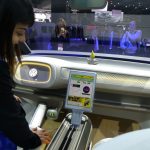
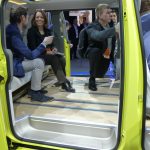
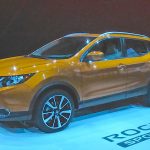
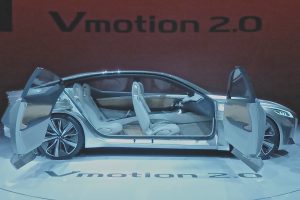
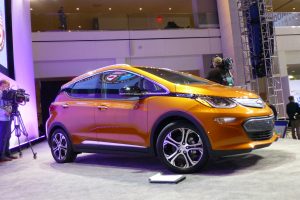
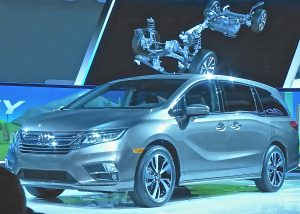
 John Gilbert is a lifetime Minnesotan and career journalist, specializing in cars and sports during and since spending 30 years at the Minneapolis Tribune, now the Star Tribune. More recently, he has continued translating the high-tech world of autos and sharing his passionate insights as a freelance writer/photographer/broadcaster. A member of the prestigious North American Car and Truck of the Year jury since 1993. John can be heard Monday-Friday from 9-11am on 610 KDAL(www.kdal610.com) on the "John Gilbert Show," and writes a column in the Duluth Reader.
John Gilbert is a lifetime Minnesotan and career journalist, specializing in cars and sports during and since spending 30 years at the Minneapolis Tribune, now the Star Tribune. More recently, he has continued translating the high-tech world of autos and sharing his passionate insights as a freelance writer/photographer/broadcaster. A member of the prestigious North American Car and Truck of the Year jury since 1993. John can be heard Monday-Friday from 9-11am on 610 KDAL(www.kdal610.com) on the "John Gilbert Show," and writes a column in the Duluth Reader.